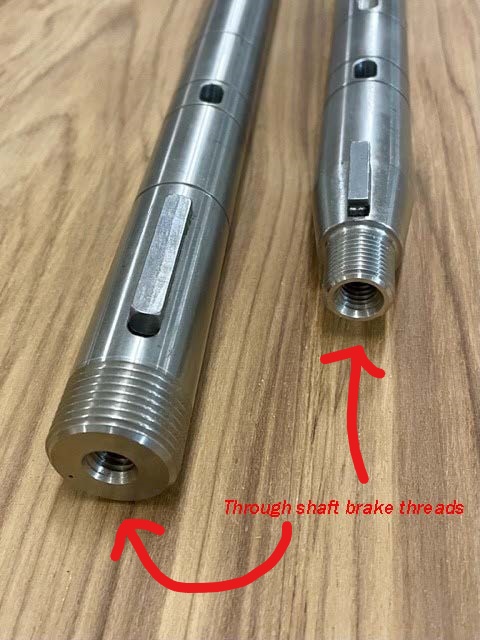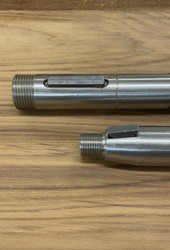Fitting a new sailboat steering wheel
Posted by Dave on Dec 28th 2022
For any number of reasons (some of which will be the subject of subsequent posts), you may want to change your sailboat's steering wheel. While this is actually more straightforward than a lot of other boat projects you might do, there are a few parameters that you need to account for to both get the new wheel to fit, and for it to achieve your desired purpose. In the interests of brevity and your respect for your attention span, we'll just focus on fit in this installment.
The first thing most people will look at is wheel diameter. Wheel diameter is going to affect a number of different things, ranging from how much of a pain in the butt it is to get from the companionway back behind the wheel to the sensitivity and feel of your steering. On most classic cruising boats, the interaction between the wheel and the cockpit seats limits how big the wheel can be, and the size you choose will be a compromise between comfortable seating positions at the helm, jib visibility, and keeping the cockpit open.

The first thing most people will look at is wheel diameter. Wheel diameter is going to affect a number of different things, ranging from how much of a pain in the butt it is to get from the companionway back behind the wheel to the sensitivity and feel of your steering. On most classic cruising boats, the interaction between the wheel and the cockpit seats limits how big the wheel can be, and the size you choose will be a compromise between comfortable seating positions at the helm, jib visibility, and keeping the cockpit open.
A critical item that you need to know is what kind of steerer shaft your pedestal has. For most boats built prior to 2000 or so, it will be a 1" straight shaft. Sometime in the early 2000s, the tapered shaft became more universal. Both start life as a 1" piece of shaft, with the straight shaft just getting threads and a key slot on the end, while the tapered shaft gets tapered into a cone and also gets a key slot.
In general, you just need to know straight or tapered and that's it. There are small differences between taper shapes among the prevalent pedestal manufacturers, but they aren't big enough to impact things. By the time the wheel is tightened down on the shaft and engaged with the key, one manufacturer's taper is going to fit securely on another manufacturer's wheel and vice versa. There are, however, some older straight shafts that were made by now-departed manufacturers that are slightly larger than 1". These present a problem as it's hard to find a wheel with a hub sized to meet these shafts. You should always measure the shaft with a caliper to be sure.

Your pedestal's through-shaft brake may be impacted by a wheel change. For example, when switching from an Edson Classic Destroyer Wheel to a Carbonautica carbon or composite wheel, the thicker hub on the Carbonautica wheel requires a spinner knob with a longer threaded insert. With a caliper, measure from where you'd like the brake spinner's knob to sit to the beginning of the threads at the aft end of the shaft and measure your current wheel's hub thickness. Knowing those 2 measurements allows us to know how long that threaded insert needs to be. The shaft on the spinner is shipped long and is easily cut to the proper length once the wheel is installed.
One last nicety when installing the new wheel is to grease the interface between the wheel hub and the shaft. Removing the old wheel initially likely showed the value in this. Annually pulling the wheel off the shaft and re-greasing that interface (we prefer TefGel for this - the 2 gram size is a lifetime supply for this task) will ensure that your wheel is able to come of the shaft when you need to remove it in the future.
As always, we're happy to help with the planning and execution of projects like this. Simply contact us by email or phone and we'll help you get sorted out.

